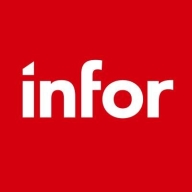

Infor M3 and SAP S/4HANA are leading enterprise resource planning solutions. SAP S/4HANA shows a significant edge with its advanced features and innovation, while Infor M3 offers distinct advantages in pricing.
Features: Infor M3 supports manufacturing and distribution sectors with its flexible supply chain and equipment management capabilities. Its tools are geared towards simplifying industry-specific processes. SAP S/4HANA stands out with comprehensive business process integration, embedded analytics, and a wide variety of SAP tools, making it suitable for large enterprises.
Room for Improvement: Infor M3 could enhance its analytics capabilities and expand its industry versatility beyond manufacturing and distribution. It might also benefit from improving its global support network. SAP S/4HANA can work on simplifying its implementation process and addressing pricing concerns for smaller businesses. Expanding support for niche industries would also be beneficial.
Ease of Deployment and Customer Service: Infor M3 offers a simpler and quicker implementation, often appealing to businesses seeking efficient deployment, alongside effective support services. SAP S/4HANA, although offering extensive support resources, involves a more complex implementation process that may require additional time and resources.
Pricing and ROI: Infor M3 is noted for its competitive pricing and faster return on investment, making it attractive for small to medium enterprises. Meanwhile, SAP S/4HANA, despite higher initial costs, offers extensive functionality and scalability, contributing to long-term value, especially for large corporations with complex requirements.
| Product | Market Share (%) |
|---|---|
| SAP S/4HANA | 9.2% |
| Infor M3 | 4.8% |
| Other | 86.0% |


| Company Size | Count |
|---|---|
| Small Business | 6 |
| Midsize Enterprise | 5 |
| Large Enterprise | 3 |
| Company Size | Count |
|---|---|
| Small Business | 50 |
| Midsize Enterprise | 26 |
| Large Enterprise | 53 |
Infor M3 offers ultimate flexibility in operations, technology, and scale. As a multi-site, multi-country, and multi-company solution, M3 empowers your organization to adapt to changing business needs. It provides flexibility in managing mixed-mode and complex environments, with the agility to make quick adjustments at any time. Written in Java, M3 also gives you platform independence and choice.
SAP S4HANA is an ERP (enterprise resource planning) system that uses sophisticated technologies including machine learning and AI. It is most commonly used to integrate and manage business functions and is an ideal solution for large enterprises. The platform includes supplier relationship management (SRM), customer relationship management (CRM), supply chain management (SCM), and product lifecycle management (PLM) functionality.
SAP S4HANA offers three different deployment options:
SAP S4HANA Features
SAP S4HANA has many valuable key features, including:
SAP S4HANA Benefits
Some of the benefits of using SAP S4HANA include:
Reviews from Real Users
Below are some reviews and helpful feedback written by SAP S4HANA users.
A Mechanical Engineer at a construction company says, “It is a very powerful, highly customizable tool. The most valuable feature is that the reporting is fast. We can see the results from that in that our commissions come in fast. That is the main advantage.”
Another reviewer, a SAP Technology Manager at a financial services firm, mentions, "It is more or less a very, very smooth and seamless product. Day by day they are increasing their technology features and they are keen to resolve the issues. India has a complex business scenario and SAP is thinking about that and resolving the issues day by day. In terms of the features I have found most valuable, I don't think that there is any lack or any gap process-wise. SAP is a very good tool."
A Project and Service delivery Manager at a tech services company comments, "One of the most valuable features, which we used the most, was the FI module, for finance. It involved controlling, account receivables, account payables, and complete financial steering."
A Senior Architect at a construction company states, “The POD applications are very useful to us. There are a few POD apps which we are using for different business scenarios. They are quite interesting.” He also adds, “The initial setup is pretty straightforward. The documentation is very good. The solution can scale well. The solution is stable.”
We monitor all ERP reviews to prevent fraudulent reviews and keep review quality high. We do not post reviews by company employees or direct competitors. We validate each review for authenticity via cross-reference with LinkedIn, and personal follow-up with the reviewer when necessary.